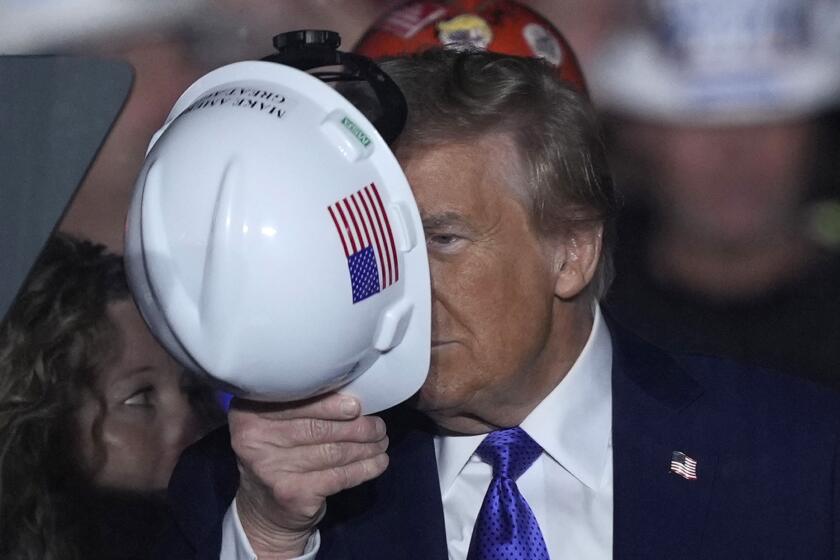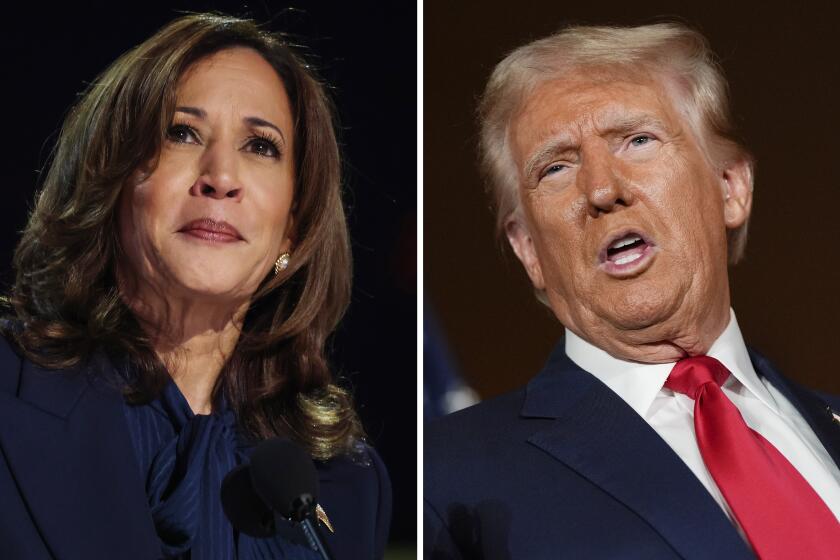Column: Here’s why California will be the 2024 presidential kingmaker. (Just kidding)
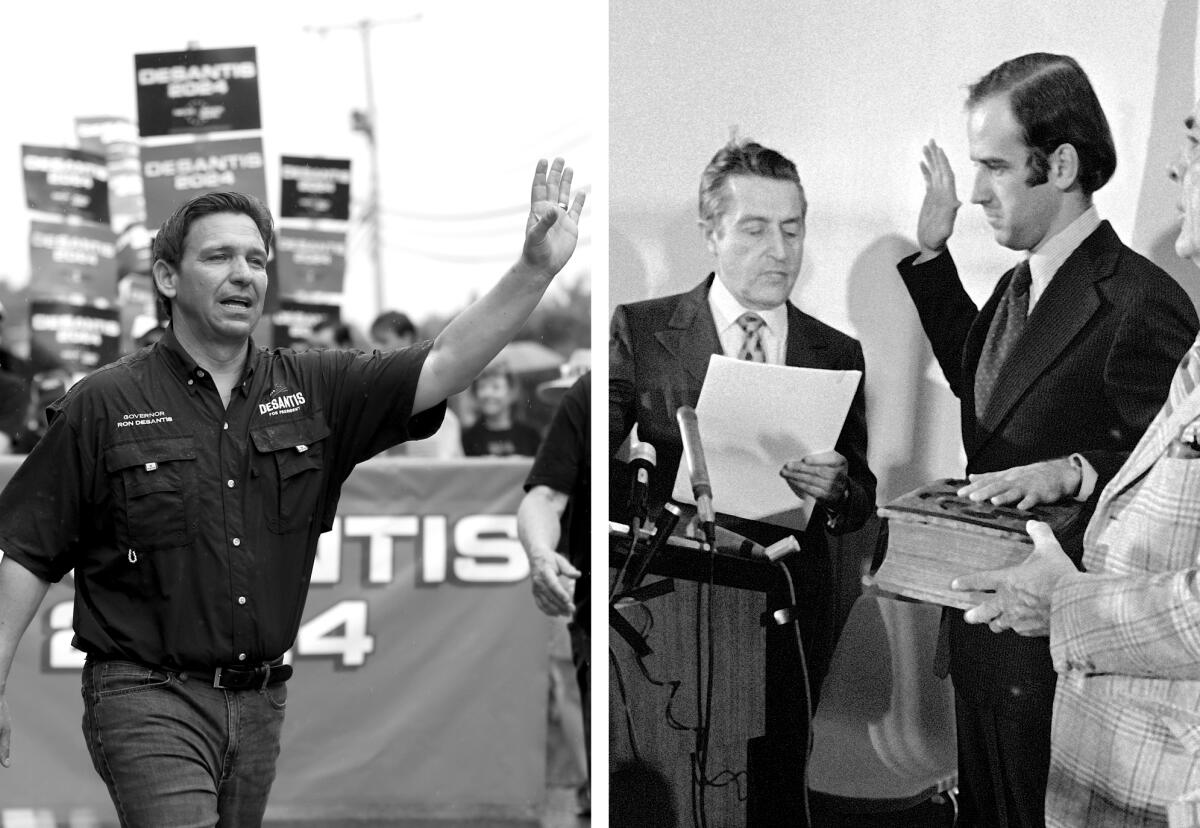
It’s summer in California, a time when thoughts turn to sandy beaches, sultry nights and, among a certain set, the significance of the state’s March 2024 presidential primary.
More than half a century has passed since California played a decisive role choosing either a Democratic or Republican nominee.
The last time was in 1972, when George McGovern’s defeat of Hubert Humphrey after a prolonged fight sent the South Dakota Democrat forth to a landslide defeat at the hands of President Nixon.
That same year, a 29-year-old upstart named Joe Biden won a surprise victory in Delaware to become the youngest member of the United States Senate. (Biden turned the requisite age 30 a few weeks before his swearing-in.)
Ron DeSantis hadn’t even been born.
That’s a long, frustrating time for California to cede the spotlight to the likes of Iowa and New Hampshire — states that, respectively, have about as many residents as Los Angeles and San Diego.
Clearly, size doesn’t matter. The Iowa-New Hampshire axis has been rooted at the front of the nominating calendar for the last several decades, giving voters there enormous sway over which candidates fall by the wayside and which advance to the many contests elsewhere around the country.
Through money and lavish attention, Bill Clinton colored California a lasting shade of blue, dramatically reshaping the nation’s presidential map in the process.
Still, hype and hope spring eternal, so every four years talk surfaces in California that this time will be different, that the state, lavished with attention, will finally wield its weight and play the kingmaking role that has so long eluded its many millions of voters.
Don’t count on it.
Barring extraordinary circumstances, President Biden will be the 2024 Democratic nominee and California will do nothing more on March 5 than ratify his selection and pad the delegate count needed for his installment atop the ticket.
(At the moment, the Democratic calendar is a bit of a muddle. Party leaders are busy trying to figure out how to implement the president’s plan to shove Iowa aside and start the nominating process in South Carolina, which resuscitated Biden’s gasping 2020 campaign, followed by Nevada and New Hampshire.)
On the Republican side, California will vote the same day as a dozen other states, among them Texas, North Carolina and Virginia. So once the candidates leave Iowa and New Hampshire — which still hold the lead positions in the GOP contest — they will be spread veneer-thin from the Atlantic to Pacific coasts.
If you’re expecting to shake Mike Pence’s hand in downtown Alturas or watch Donald Trump flip pancakes in Brawley, the way you can catch a presidential hopeful in just about any Iowa pinpoint town or New Hampshire hamlet, well, sorry.
It’s not, however, for lack of trying.
Over the years, the timing of California’s presidential primary has intermittently surfaced as an issue in Sacramento. (Though not in the most recent session.)
Starting in 1992, the date bounced around several dates between February and June as lawmakers sought to elevate the state’s relevance beyond its customary role as a dispenser of cash spent elsewhere.
All to no avail.
That’s because changing the state’s lowly presidential campaign status would require a number of feats beyond the power of even the most super-powerful legislative supermajority.
For one thing, California is physically immense.
Placed on a map, the state stretches from Maine to South Carolina. That’s a lot of ground for a candidate to cover and takes a lot of time. (Forget all the fanciful talk of breaking California into smaller chunks. That’s not going to happen.)
So the best and most efficient way to reach the greatest number of California voters is through television advertising, which is hugely expensive. An ad dollar goes much further in Iowa and New Hampshire, as well as South Carolina and Nevada, so it’s not hard to figure out a campaign’s bang-to-buck ratio.
The only way to make California more affordable and enticing for a presidential candidate to seriously compete would be a legally mandated bargain-basement rate for TV advertising. (That’s another nonstarter.)
Also working against California is the front-loaded nature of the presidential nominating process.
A candidate must win early to gather the momentum needed to slingshot into the nationwide campaigning that commences as soon as voters in the leadoff contests have their say.
John Kasich, then a Republican congressman from Ohio, put it succinctly.
“I would love to campaign in California,” he said during a 1999 stop in Bel-Air. (He was, naturally, out of sight of most voters, raising money for his long-shot White House bid.)
“I can’t even think about that until I get out of Iowa and New Hampshire,” Kasich said. “If I die in New Hampshire . . . there’ll be no California, except for vacations.”
There was no California.
Kasich didn’t even make it to Iowa or New Hampshire in 2000.
Former Senate colleague believes if Sen. Feinstein quits, GOP won’t let a Democrat fill her Judiciary Committee seat — which would block Biden’s judicial nominees.
If you think California could exert itself simply by elbowing its way to the front of the calendar, consider what happened in 2008. The state moved up its vote to Feb. 5 and nearly two dozen others states crowded onto the same date, nullifying California’s impact and making Iowa and New Hampshire even more important for candidates seeking to break out ahead of the nationwide balloting.
The bottom line: California will almost surely be overshadowed once more in 2024 by fiercely fought presidential contests in other, much smaller states.
There is, however, some solace.
Go watch a technicolor ocean sunset. Take a walk among the giant redwoods. Enjoy the granite majesty of the Sierra.
You can’t do any of those things in Iowa or New Hampshire.
More to Read
Get the latest from Mark Z. Barabak
Focusing on politics out West, from the Golden Gate to the U.S. Capitol.
You may occasionally receive promotional content from the Los Angeles Times.

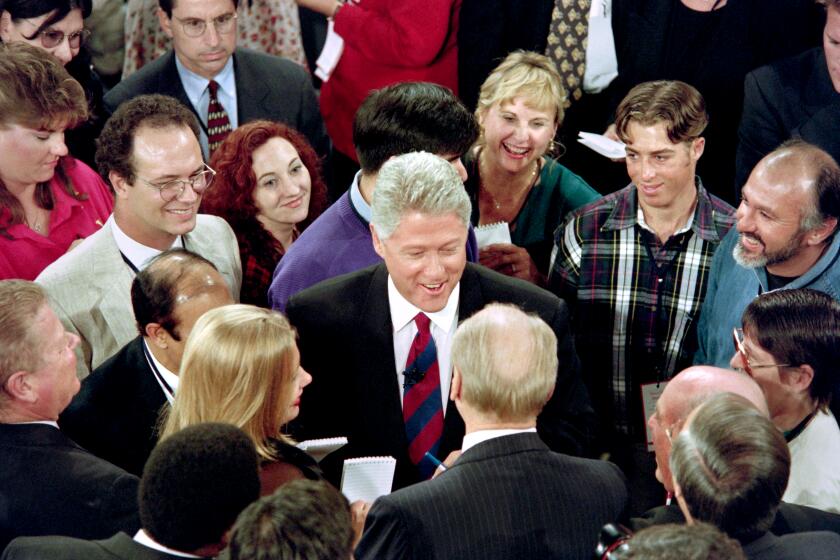
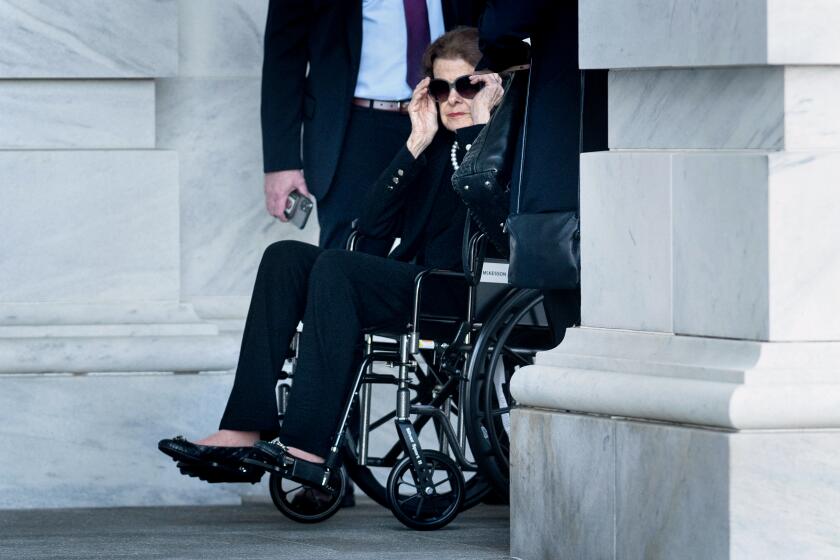






![[20060326 (LA/A20) -- STATING THE CASE: Marchers organized by unions, religious organizations and immigrants rights groups carry signs and chant in downtown L.A. "People are really upset that all the work they do, everything that they give to this nation, is ignored," said Angelica Salas of the Coalition of Humane Immigrant Rights. -- PHOTOGRAPHER: Photographs by Gina Ferazzi The Los Angeles Times] *** [Ferazzi, Gina -- - 109170.ME.0325.rights.12.GMF- Gina Ferazzi/Los Angeles Times - Thousands of protesters march to city hall in downtown Los Angeles Saturday, March 25, 2006. They are protesting against House-passed HR 4437, an anti-immigration bill that opponents say will criminalize millions of immigrant families and anyone who comes into contact with them.]](https://ca-times.brightspotcdn.com/dims4/default/34f403d/2147483647/strip/true/crop/1983x1322+109+0/resize/840x560!/quality/75/?url=https%3A%2F%2Fcalifornia-times-brightspot.s3.amazonaws.com%2Fzbk%2Fdamlat_images%2FLA%2FLA_PHOTO_ARCHIVE%2FSDOCS%2854%29%2Fkx3lslnc.JPG)
